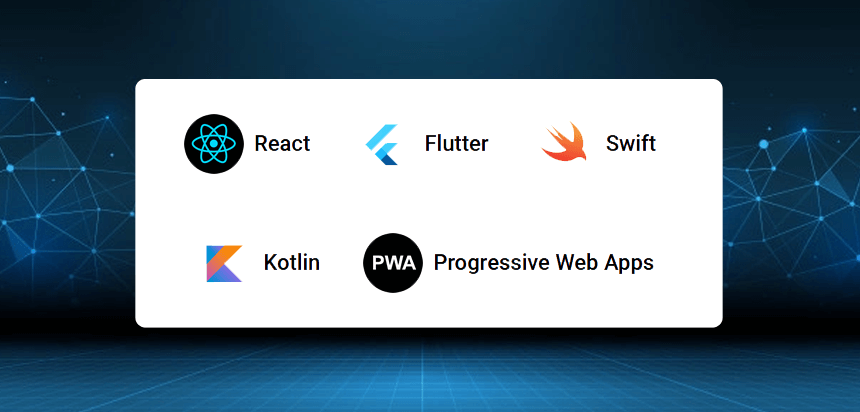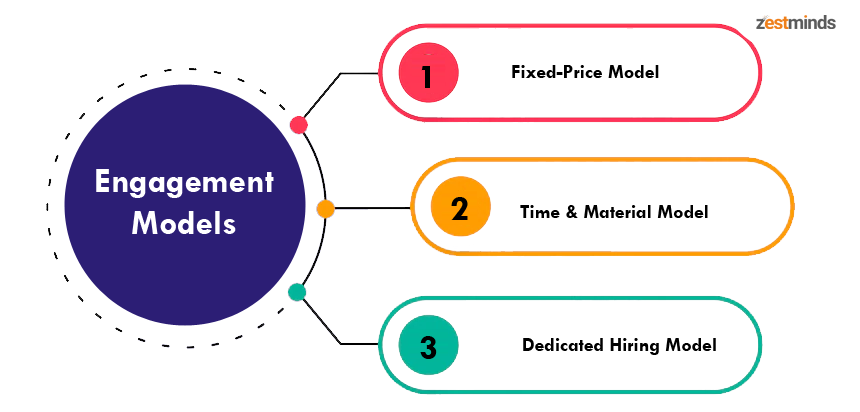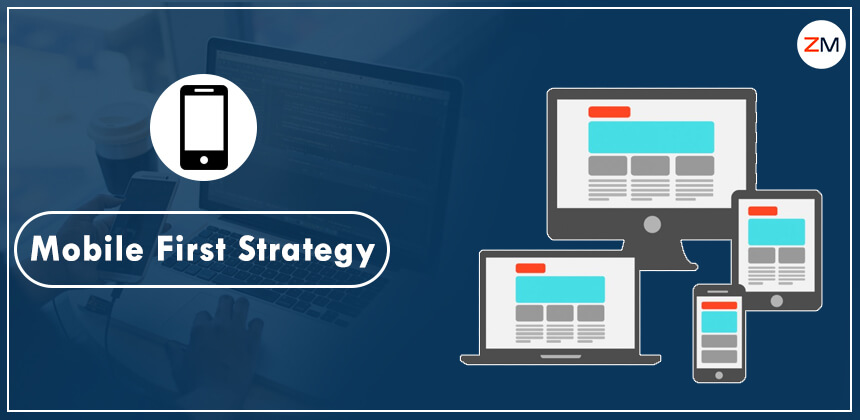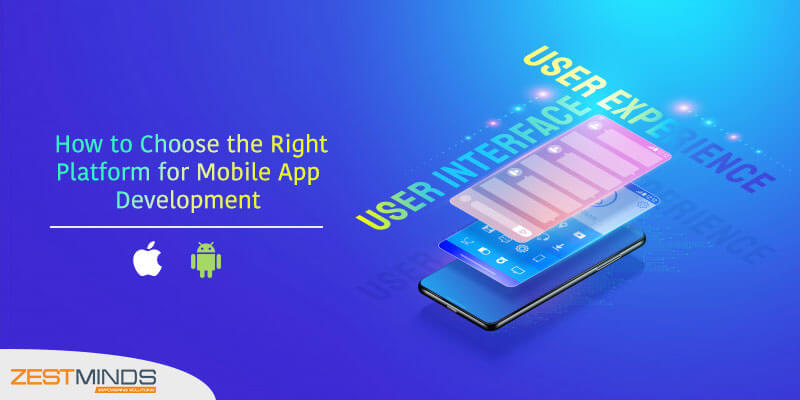How to Choose the Best Technology Stack for Your Mobile Apps
Choosing the right tech stack is crucial for your mobile app’s success. Discover key factors to make the best decision for performance, scalability, and efficiency!

After a lot of thinking and writing down many thoughts, you have at last chosen to assemble your app. You know what the app will do, and the specifications and features. However, did you consider the technology stack for your app? What platform will you create your app for? Which technology will you utilize? What structure will complement your app specification?
About mobile app development, picking the correct technology stack is the most important aspect of the whole cycle. It actually will serve as a requirement for your mobile app functionality, versatility, and support. The whole technology grows 10 folds every year. Particularly, the growth in the mobile app development technologies has given such versatility and suitability to the developers that today we have around 3 billion apps created on all the technologies accessible.
So, which one is for you? We'll discover. At first, we should know the idea of the fundamentals.
 There are a lot of components that are subject to the determination of the correct tech stack for your mobile app development process. The possibility of whether your app is powerful or will it have the option to scale to various operating framework forms, depends heavily on the technology combination that you decide for its development.
Any improper or uncalculated choice in the choosing of nothing but the best tech stack for mobile applications will influence its present performance and future development prospects negatively.
While all these are the sort of issues you may face when you are inside the cycle of mobile app development, there are a lot of starting issues that may be the reason for the wrong choice of technology.
Since you currently recognize what technology stack is and for what reason is it significant for your app to be worked with the best-suited technology stack, we should investigate these technology stack alternatives:
● Native App Technology Stack
Native Mobile apps are known for their excellence and robustness performances. The nature of the app that professional organizations generally search for is the solution of Native Mobile App Development.
Native apps offer incredible device compatibility, consistent user experience, and high security. Not simply that, native apps integrate the device's in-built functionalities without requiring a third-party API.
Discussing native apps, the two most important names that pop-up are Android and iOS apps. Both these platforms accompany various compatibilities, which obviously, calls for various technology stacks too. Let's investigate generally utilized technology stack for iOS and Android mobile app development:
a) Android Tech Stack
There are a lot of components that are subject to the determination of the correct tech stack for your mobile app development process. The possibility of whether your app is powerful or will it have the option to scale to various operating framework forms, depends heavily on the technology combination that you decide for its development.
Any improper or uncalculated choice in the choosing of nothing but the best tech stack for mobile applications will influence its present performance and future development prospects negatively.
While all these are the sort of issues you may face when you are inside the cycle of mobile app development, there are a lot of starting issues that may be the reason for the wrong choice of technology.
Since you currently recognize what technology stack is and for what reason is it significant for your app to be worked with the best-suited technology stack, we should investigate these technology stack alternatives:
● Native App Technology Stack
Native Mobile apps are known for their excellence and robustness performances. The nature of the app that professional organizations generally search for is the solution of Native Mobile App Development.
Native apps offer incredible device compatibility, consistent user experience, and high security. Not simply that, native apps integrate the device's in-built functionalities without requiring a third-party API.
Discussing native apps, the two most important names that pop-up are Android and iOS apps. Both these platforms accompany various compatibilities, which obviously, calls for various technology stacks too. Let's investigate generally utilized technology stack for iOS and Android mobile app development:
a) Android Tech Stack
 You have a perfect choice of technology stacks for mobile applications, yet which one is ideal for you to use in your application development project? How to Find the Best Tech Stack for Mobile App Development? It's essential to have a strong arrangement as a primary concern while picking a mobile application stack if you need to have professional, practical software but something more like maintainability, versatility, and security.
You have a perfect choice of technology stacks for mobile applications, yet which one is ideal for you to use in your application development project? How to Find the Best Tech Stack for Mobile App Development? It's essential to have a strong arrangement as a primary concern while picking a mobile application stack if you need to have professional, practical software but something more like maintainability, versatility, and security.
What Is a Mobile Development Technology Stack?
A mobile development technology stack is a mix of software items, programming languages, structures, libraries, platforms, tools, and UI/UX solutions utilized by your mobile app development team.The whole mobile application development technology stack can be divided into 3 regions. These regions also establish the whole anatomy of an application. Here are those three segments:
• Frontend Development — The interface on which the client collaborates with the mobile app. • Backend Development — This is the part that takes the client input, measures it, and converts it into an ideal output. • Development Platform — This is where interfaces and libraries come into the image as a mix to design and build up the mobile app development framework. Since you realize what mobile app technology stack is, let us now investigate the reasons why it is significant for organizations for giving mobile app development services or even people to sit with their mobile app development organization and take a look at the technology stack that would be placed into their mobile apps.Why Is It Important to Find the Best Tech Stack for Your App?
 There are a lot of components that are subject to the determination of the correct tech stack for your mobile app development process. The possibility of whether your app is powerful or will it have the option to scale to various operating framework forms, depends heavily on the technology combination that you decide for its development.
Any improper or uncalculated choice in the choosing of nothing but the best tech stack for mobile applications will influence its present performance and future development prospects negatively.
While all these are the sort of issues you may face when you are inside the cycle of mobile app development, there are a lot of starting issues that may be the reason for the wrong choice of technology.
Since you currently recognize what technology stack is and for what reason is it significant for your app to be worked with the best-suited technology stack, we should investigate these technology stack alternatives:
● Native App Technology Stack
Native Mobile apps are known for their excellence and robustness performances. The nature of the app that professional organizations generally search for is the solution of Native Mobile App Development.
Native apps offer incredible device compatibility, consistent user experience, and high security. Not simply that, native apps integrate the device's in-built functionalities without requiring a third-party API.
Discussing native apps, the two most important names that pop-up are Android and iOS apps. Both these platforms accompany various compatibilities, which obviously, calls for various technology stacks too. Let's investigate generally utilized technology stack for iOS and Android mobile app development:
a) Android Tech Stack
There are a lot of components that are subject to the determination of the correct tech stack for your mobile app development process. The possibility of whether your app is powerful or will it have the option to scale to various operating framework forms, depends heavily on the technology combination that you decide for its development.
Any improper or uncalculated choice in the choosing of nothing but the best tech stack for mobile applications will influence its present performance and future development prospects negatively.
While all these are the sort of issues you may face when you are inside the cycle of mobile app development, there are a lot of starting issues that may be the reason for the wrong choice of technology.
Since you currently recognize what technology stack is and for what reason is it significant for your app to be worked with the best-suited technology stack, we should investigate these technology stack alternatives:
● Native App Technology Stack
Native Mobile apps are known for their excellence and robustness performances. The nature of the app that professional organizations generally search for is the solution of Native Mobile App Development.
Native apps offer incredible device compatibility, consistent user experience, and high security. Not simply that, native apps integrate the device's in-built functionalities without requiring a third-party API.
Discussing native apps, the two most important names that pop-up are Android and iOS apps. Both these platforms accompany various compatibilities, which obviously, calls for various technology stacks too. Let's investigate generally utilized technology stack for iOS and Android mobile app development:
a) Android Tech Stack
If you need to concentrate on the biggest portion of your interested audience and choose to create a native application for Android, focus on the following mobile development technologies:
Programming Languages — Kotlin and Java Java is a coding language utilized as an app stack for Android; however, it is also applied to web development, Big Data, and others. It accompanies different open-source libraries and tools to encourage the usage of a software engineer and reduce your time-to-market. Although Kotlin is the official programming language for android app development, java is as yet utilized broadly by the engineers. In any case, with time, Kotlin has become a more steady choice for the designers to work around in the Android studio. The way that the language is lightweight, clean, and significantly less verbose is making it an answer for all the Java issues. Development Tools—Android Studio Android studio is a development apparatus that gives engineers the feasibility to alter code, investigate, and gives an instant deployment framework. The platform focuses entirely on making great android mobile applications. Alongside that, it permits engineers to utilize various on-device troubleshooting tools, emulators, graphical UI manufacturers, and scriptable test automation support. b) iOS App Technology StackIf you need to make a native application for iOS, you will have to consider the following mobile app technology stack:
Programming Languages — Swift and Objective-C The most favored languages that are the aspect of the iOS mobile app development technologies are Swift and Objective-C. So, Swift is more liked and suggested programming language, just because this language is much more useful and offers codes which are significantly less error-prone. It additionally comprises dynamic libraries that are uploaded properly to memory, reducing the actual app size and expanding its performance. Development Tools — Xcode and AppCode If you pick Swift for your iOS app, at that point you'll require Apple Xcode as the toolkit for building up your native app. This full-featured development environment lets you make mobile apps just as desktop applications. Xcode accompanies integrated support for Git repositories, a graphical editor to manufacture user interfaces, instrumentation and debugging tools, and integrated documentation. Though, AppCode is an alternative to Xcode that has begun to get popular. The quicker coding and different language support offer C, C++, and JavaScripts. ● Hybrid App Technology Stack Hybrid apps are generally created with the assistance of the standard web procedures like CSS, HTML5, and JavaScript. Hybrid apps generally comprise two segments — Backend and Native shell. These apps run on all platforms while giving access to API and acquiring device cameras and storage. A few of the best technologies for Hybrid App development that are most generally utilized for the development incorporate — Cordova, Sencha Touch 2, and Ionic. ● Cross-Platform App Technology Stack Where Native apps are the ones that are made particularly for one platform either Android or iOS then there are Cross-platform Apps that are created to run on both the platforms in one attempt and this is the best Backend Technology for Mobile App. Cross-platform app development implies utilizing one code to create/construct the app that would run on various platforms — Android, iOS, Web. Most organizations go for cross-platform app development basically as a result of the way that they can work around more prominent demographics. The absolute best cross-platform structures are Flutter, React Native, and Xamarin. Particularly Flutter, one of the important amongst other cross-platform frameworks we have ever use. It's been over 10 years of building mobile apps utilizing the greater part of the frameworks and technologies accessible, nothing can beat Flutter. We strongly suggest picking Flutter, for your mobile app.How to Pick the Best Tech Stack for Your App
 You have a perfect choice of technology stacks for mobile applications, yet which one is ideal for you to use in your application development project? How to Find the Best Tech Stack for Mobile App Development? It's essential to have a strong arrangement as a primary concern while picking a mobile application stack if you need to have professional, practical software but something more like maintainability, versatility, and security.
You have a perfect choice of technology stacks for mobile applications, yet which one is ideal for you to use in your application development project? How to Find the Best Tech Stack for Mobile App Development? It's essential to have a strong arrangement as a primary concern while picking a mobile application stack if you need to have professional, practical software but something more like maintainability, versatility, and security.
There are a ton of interesting points when attempting to select the Best Technology Stack for Mobile App Development. How about we experience each in detail:
1. Project Type This is an important determinant while picking a mobile development technology stack for your mobile application. For instance, if you're trying to make an extraordinary mobile application with extraordinary performance and a totally custom, platform-specific UI usage, and don't have a budget limitation then you should go native. In such cases, Kotlin or Swift are the ordinarily utilized programming languages and these are the best Technology for Mobile App Development. 2. The Goal of the App The determination of the technology stack additionally relies upon what the mobile application is significantly focusing on, what is the objective that you need to achieve with this application. Besides, there would be a distinct difference in the mobile application technology stack decision when you are trying to build up a high latency application versus a quick response, low latency mobile application. A mobile application that relies on heavy load processing calls requires a much vigorous tech stack than the ones that work around streamlined communications. 3. Budget It's implied that money is the main driver for any business. Frequently organizations can't bear to invest money into simultaneous development of iOS and Android applications, particularly if we are discussing the thought of validation. In such situations, you can decide to go for cross-platform mobile application development, which will make applications for both Android and iOS at the expense of creating one. We will suggest picking Flutter over different cross-platform systems as its help is backed by Google and extraordinary proven performance. 4. Long term procedure Adaptability and stability refer to the capacity of your software to manage development outbreaks and occasional outbreaks. These are the key measurements that can either rise or sink your business as in the present situation, clients become less loyal. As the quantity of customers increases and the organization develops, your application ought to have the option to deal with this development and adjust to your necessities, permitting both horizontal and vertical scaling. Post-release support ought to be done consistently to ensure consistent performance and prevent client churns. Mobile application development will keep on developing as an ever-increasing number of projects embrace mobile technologies. If you need to make an exceptionally functional mobile application, picking the correct mobile application technology is the key thing. With this, you currently have a deep understanding of the latest Technology of Mobile App that you have to begin with your first mobile application development project. Presently regardless of which technology you end up utilizing, ensure that they function admirably with your present application structure and make your mobile application to be creative and versatile. So, if you are searching for a Mobile App Development Company then you can contact us. You can send us an email on our mail id, contact@zestminds.com. Our team will contact you as soon as possible. They will help try to solve your problems. We have a team of experienced and trained developers that will develop the mobile application according to your requirement.
Shivam Sharma
About the Author
With over 13 years of experience in software development, I am the Founder, Director, and CTO of Zestminds, an IT agency specializing in custom software solutions, AI innovation, and digital transformation. I lead a team of skilled engineers, helping businesses streamline processes, optimize performance, and achieve growth through scalable web and mobile applications, AI integration, and automation.
Stay Ahead with Expert Insights & Trends
Explore industry trends, expert analysis, and actionable strategies to drive success in AI, software development, and digital transformation.

January 11, 2023
How to Choose the Right Engagement Model for Mobile App Development?

March 22, 2022
Why Mobile First Strategy will be an Evergreen Strategy

December 19, 2019
How to Choose the Right Platform for Mobile App Development ?
Stay Ahead with Expert Insights & Trends
Explore industry trends, expert analysis, and actionable strategies to drive success in AI, software development, and digital transformation.

January 11, 2023
How to Choose the Right Engagement Model for Mobile App Development?

March 22, 2022
Why Mobile First Strategy will be an Evergreen Strategy

December 19, 2019

